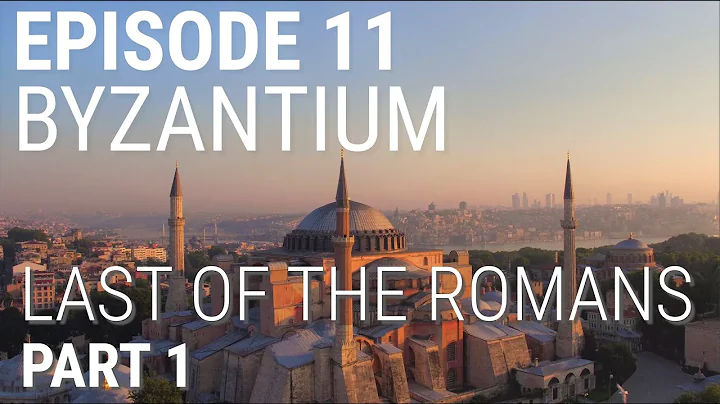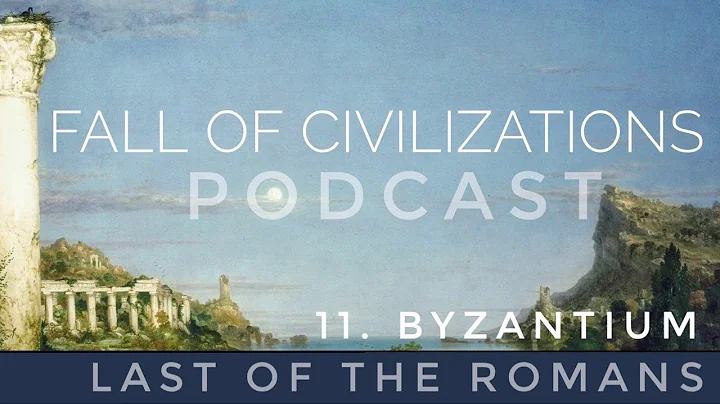Everyone knows that when the Turks’ cannons captured Constantinople, they shocked the Byzantines. Many generals who defended the city dispersed without panic, leading to the fall of the iron city that was once considered impregnable. (Huo Yanjun press: everyone can make up for it. In "Quanyou", the dragon mother rode a giant dragon and burned King's Landing)

Yes, the monarch at the time Tantinburg was bombed by Italian artillery, oh no, it was bombarded by cannon like a purgatory on earth. However, did these advanced weapons really cause the subjugation of Byzantium? My answer is no. There are many factors for Byzantium to be able to come to an end. Even in a sense, it is completely "made" by itself. (Jun Huo Yan silently recalled the Queen Cersei standing in Junlin City)
Okay, not much nonsense, we started to analyze it seriously.

Although the Ottoman artillery is powerful, it is not a key factor in the victory of this war.
Why do you say that? Because the Hungarian Master Oban made this cannon for Sudan in the past, it takes a long time to reload and fire, which makes it easy for the defenders to make up most of the damage between two launches. Moreover, this cannon is also a hot potato for the Turks themselves, because its recoil is too great, and it will face the risk of explosive disintegration when launched, and there are real historical records of the barrel burst on the battlefield. (Huoyan Jun's press: did you remember the scene of Euron shooting a dragon with a giant arrow?)
Again, think about it, Such a huge shell can only be hundreds of miles away Manufactured in special facilities, and must be repeatedly dragged to the battlefield, so its logistics and ammunition supply will definitely consume a lot of manpower and material resources. However, according to historical records, the Turks did not guarantee the supply of the cannon, which greatly reduced the power of this giant cannon.

The physical photo of the cannon
Seeing that the cannon cannot be attacked for a long time, the Ottomans are indeed a little anxious. As a result, they developed a new strategy: dig tunnels.
With the help of Serbian miners, they quickly set about digging a tunnel, hoping to destroy the foundation of Theodosian walls. However, this plan was discovered by a clever Scot in the later stage, and he quickly communicated the news to the Byzantines, who lay in ambush at the tunnel entrance and successfully thwarted the tunnel plan. The Ottomans were greatly disappointed, and they had no choice but to use their strength to consume the defenders of Constantinople, eager to break the city.
This shows a truth- As the attack time increases, the invading army will become more and more desperate. So the Ottomans could only re-use the tried-and-tested method of siege warfare—abandoning all the gorgeous new gunpowder techniques, and instead used a ladder to attack the city directly.
It can be seen that the cannon was not included in the Ottomans’ final siege plan. Its appearance did bring great fear to the Byzantines, but it was not a decisive factor in the war.

It’s also worth noting that although Theodosius’ wall is very old, its design is very good and can be largely To resist artillery attacks.

Section of Theodosius city wall
It is actually an earthen city wall made of a large amount of clay, stone and brick, and its structure is extremely strong. Later, during the Renaissance, a special engineer imitated this design to build the city, the purpose is to deal with the besieged artillery.
The ultra-thick fortifications of the adobe engineering can not only absorb the energy of the shells, but also ensure that the city wall structure avoids too much damage. Coupled with the wide moat of Constantinople, it can further deter invading troops. So, this city is not likeAs unprepared and vulnerable as the legend. (Fire Yanjun's button: the same as Junlin City.)

The walls of Byzantium were breached by "Human Xin".
Can the heart attack the city? My friends would definitely think I was talking nonsense, but Constantinople was indeed breached by the "human heart".
1. The city wall was "accidentally" breached .
Let’s take a look at how the Turks invaded Constantinople-the city wall in Blachernae was the final breakthrough that determined the fate of Byzantium. It was built in the northwest of the city The Ministry is a row of newly constructed city walls, but it is the city wall with the least materials in Constantinople. (Huo Yanjun's press: How do the Byzantines build a wall?)

In the above picture, the area in the upper left corner of the map is drawn with a small question mark. The Turks broke into Constantinople that year. A large number of Turkish troops entered Constantinople from Bracherna, destroying the Byzantine Empire.

The Turks are operating the cannon to siege the city
However, even when the city wall falls, the situation is not without turning point. The last offensive began after midnight on May 29, but the Byzantine defense was very tenacious, repelling waves of Ottoman troops. Until an "accident" occurred, historians often regarded the accident as an act of rebellion.

On May 30th, the next morning, a door of Bracherna was "accidentally" opened. The detachment of Janissaries quickly occupied that part of the city wall and hoisted the Turkish flag there, which greatly reduced the morale of the defending army.
2. Allies pushed each other, but they were delayed in helping.
As an ally of Byzantium, the Venetians often blame the fall of Constantinople on the captain of Genoa, Giovanni Giustiniani. After the latter was injured and his men fled their posts, the defending line collapsed and the enemy drove straight in.
At that time, people took this accusation of escape very seriously, and the Republic of Genoa had to conduct full diplomatic activities, denying it in front of other Christian countries. Of course, why does Venice have to target Genoa? The main reason is- The Venetian did not send any supporting fleet to assist the capital within two months of being besieged by Constantinople. In order to avoid people's verbal criticism, Venice can only turn its attention to the Republic of Genoa. (Fire Yanjun's press: Venice is worthy of a merchant country, be careful and swindle.)

The Guardian of Constantinople
3. Interests of all parties The undercurrent surging.
Therefore, the main reason for the fall of Constantinople in 1453 is indeed more complicated than a simple cannon.
In the middle of the 15th century, the Genoese and Venetians actually hoped to reach cooperation with the Turks. Because in 1451, the Turks controlled the Bosporus and Dardanelles, which means they actually controlled the bread and butter trade routes of those commercial republics.
And old Rome—that is, the Pope of Rome, for personal reasons, he wanted Constantinople to remain in the hands of Christianity, but— Except for Pope Pius II Piccolomini ( Except for Pius II Picolomini), those nobles and failed popes did not really help Constantinople against the Ottoman Empire.

On the other hand, the Greeks did not try their best in this defense.
In fact, they have been cooperating with the Turks: more Greek soldiers are fighting for the Sultan instead of defending the city for the emperor . Even within the walls of Constantinople, senior politicians like Megas Dukes (megas doux) also publicly declared that would rather see Constantinople wearing "Turkish Turban instead of the pope’s crown.”
The last dynasty of Byzantium, the Palaiologoi dynasty (Palaiologoi dynasty), tried to maintain a unified appearance with Western Christianity, but this approach is increasingly despised by their people and churches . Actually, this dynasty can only maintain power with the help of Western mercenaries, allies and sponsors. During that time, only these people were willing to really work for Byzantium. (Huo Yanjun's press: I really feel that the Lansnet dynasty of King's Landing was written with reference to this history.)
Eventually Constantinople was replaced by the Turks in 1453, mainly because All those involved in the defense-the Latins, the Greeks and the Turks themselves-think this is the best option.

Family Totem: Double-headed Eagle
Palaiologoi dynasty (Palaiologoi dynasty) This family was founded by the 11th-century Nicky Fros Parario Founded by General Nikephoros Palaiologos and his son George, they rose to the highest aristocratic class through marriages with the Doukas and Komnenos dynasties. After the Fourth Crusade, family members fled to the neighboring Empire of Nicaea. In 1259, Michael VIII Palaiologos became the joint emperor there, regained Constantinople, and was crowned the sole emperor of the Byzantine Empire in 1261. His descendants ruled the empire until the fall of Constantinople on May 29. It is worth mentioning that from 1261 to 1453, it also became the longest-lived dynasty in the history of Byzantium.

It can be seen that even the most powerful artillery can not blow people’s hearts. But if the hearts of the people fall, no matter how strong the wall is, it will not be able to hold it. The Turk’s cannon is just a scabbard. It is the hearts of the people that really pierced Byzantium!
Therefore, the fall of Constantinople has truly fulfilled that sentence, "Those who lose the hearts of the people lose the world! Ah"
文丨火焱
I am Huo Yan, an in-depth "Quan You" fan, and a history expert who is not doing business. Your [attention] will be my motivation for continuous updates.
This account has signed a contract with the activist knight and cannot be reposted to other platforms without permission.
Finally Longma Town Building. I wish you all a happy watching and gaining something.

文文
1. Gill, Joseph (1980). "Family feuds in fourteenth century Byzantium: Palaeologi and Cantacuzeni. " Conspectus of History. BallState University. 1 (5): 64.
2. "Palaeologan Dynasty (1259-1453)". Encyclopaedia of the Hellenic World. Asia Minor: Foundation of the Hellenic World. 2008. Retrieved 15 October 2014.
3.heophanes Confessor. In: Fontes Historiae Daco-Romanae, București, Institutul de studii Sud-Est Europene, 1970, p.599
4.Ekonomou, Andrew J.Byzantine Romeb51a#By and the Greek Popes: Eastern influences on Rome and the papacy from Gregory the Great to Zacharias, AD 590–752, page 42. Lexington Books.
5. Vryonis, Speros (1969). "The Byzantine Legacy and Ottoman Forms". Dumbarton Oaks Papers. Dumbarton Oaks, Trustees for Harvard University. 23/24: 251–308. doi:10.2307/1291294. JSTOR 1291294. OCLC 31601728.







![[HOI4] Byzantium VS Ottoman Empire - DayDayNews](https://i.ytimg.com/vi/NWPslHxWKdY/hq720_2.jpg?sqp=-oaymwE2CNAFEJQDSFXyq4qpAygIARUAAIhCGABwAcABBvABAfgBlAOAAtAFigIMCAAQARhEIEwoZTAP&rs=AOn4CLDkZebkIj65vYOBJrSYuP1PySFwag)













